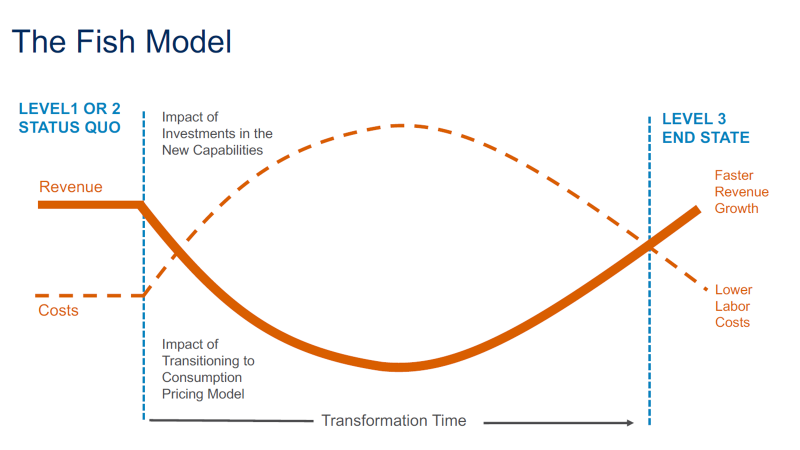
This blog is one of a series of three that we will be publishing in the coming weeks on the challenge of digital transformation for technology companies. In particular, I will be taking a closer look at:
- Opportunities, Threats and Responses in Digital Transformation
- The Critical Success Factors (CSFs) required for Successful Transformations
- The capabilities that are required to deliver the CSFs
In this first post we consider opportunities, threats and responses and the implications of each.
OPPORTUNITIES, THREATS AND RESPONSES IN DIGITAL TRANSFORMATION
I spend a lot time talking to technology executives and industry thought leaders and reading endless papers, blogs and posts on the challenges facing technology companies right now. My specific interest is how they approach change implementation and transformation, so with that lens in mind, what have I learned to date?
1. OPPORTUNITIES
- Digital transformation is currently the biggest business opportunity for technology companies. And, its impact is growing exponentially. If you remember, at the beginning of the decade, digital was essentially a tool to improve the productivity of businesses but now it is a tool to significantly disrupt them too. While business unit level change is still taking place, disruption is often Enterprise-wide.
- The market opportunity is huge. For example, in 2016, McKinsey reported that only 18% of the American economy was digitalised. They also reported that there were big gaps between ‘Leaders’ like Finance, Media and IT and ‘Laggards’ like Healthcare, Construction and Hospitality.
- These trends indicate growing revenue streams for players, who have the right capabilities, to help customers deliver their change programs.
2. THREATS
Once you dig below the surface there are some trends that threaten the potential success of technology companies.
- One threat is the potential inability of technology companies to transform their own businesses. Most are moving from upfront product revenues to subscription revenues and need to really focus on optimising adoption, consumption and renewal. The ‘Fish Model’ (See Figure 1 – which is taken from How to Lead Your Company to Success in the Cloud by TSIA) shows how this negatively impacts revenues and cost over potentially a long period of time. Adobe started transforming its business from an on-premise boxed product business model to a subscription business model in 2011 - and the change continues today.
Figure 1 - The Fish Model – Source & copyright TSIA

(copyright TSIA, all rights reserved).
Talking to industry executives they worry that many companies may never leave the Transition Time. They won’t have the capabilities and agility to reach the End State. This leads to a ‘death spiral’ as more agile competitors transform more rapidly and comprehensively.
- If this wasn’t enough, the challenge of digital transformation is doubled up for a Technology Company. They are often having to transform themselves and simultaneously help their customers transform. If you are not careful, this can feel like the teacher who learns the lesson plan the night before the lecture. It can work but it’s not ideal!
- Customers are reporting they value organizations who help them deliver business outcomes. For some technology companies this is a big shift from installing product or even embryonic customer success functions. It can be achieved but it requires the development of a set of strategic transformational capabilities.
3. RESPONSES
There are many ways the execution of transformation programs can be improved. Creating crisper program definitions, helping customers really understand the economics implications and automating process redesign using real-time data are just a few. However, digital transformation requires major changes in people, processes and technology. To my mind, the toughest actions with the biggest payoffs, are changing people’s (leaders and employees) mindsets, behaviour and skills. Listen to what two experienced senior executives had to say about change and culture below.
- At a recent Gartner/IT Expo Ginni Rometty, CEO of IBM said that companies beginning to work with AI must consider change management, Rometty said. "This is not a technology issue, this is a change management issue," she added. "This is about changing how people do their work." She said that she had learned that "It's leadership's job to change how work is done, and that led us down a very different journey of work."
- Mark Garrett, Adobe’s Vice President of Business Operations and Strategy told McKinsey's Kara Sprague, “At first - when we started our change - the reaction from some people in, say, IT or in the back office was that we were crazy. We had to contend with some of that cultural antibody—especially given that we were a company that had been doing things the same way for almost three decades.”
Executives who successfully transform organisations ‘get this’. Transformation simply can’t take place if leaders and employees keep behaving as they have always done. This successful change requires a specific focus and set of capabilities.
In Figure 2, I make the point that you can always install technology, but successful change means:
Solution delivery + Aligned changes in employee’s commitment, behaviour and skill sets.
Our data shows that in most change programs that only 26% of affected staff reported that they were committed to the new technology after a major change was completed. The remaining 74% were either resisting or merely accepted the change had to happen. Note, this latter group don’t have enough commitment to drive significant change and are easily persuaded to revert to old ways of working.
Figure 2 - Benefits realisation versus solution delivery

Source: Changefirst
I’ve laid out the opportunities, threats and potential responses to the challenge of digital transformation for technology companies.
In the next blog I’m going to put forward what I believe are the four most important strategic Critical Success Factors that drive transformational success:
- Shared Purpose
- Leadership
- Engagement
- Deployment
I will also give you recent data from Changefirst’s own database of over 45,000 change practitioners and 700,000 data points that supports this and – more importantly - tell you how you can begin to action these CSFs.
If you don’t want to miss it - simply subscribe to the series and our other blog posts on the right-hand side of the page.
Manage the digital transformation in your Technology Company with Roadmap Pro
 If managing the change management element of digital transformation in your Technology Company - both internally and with your client - you may also be interested in our revolutionary change management platform Roadmap Pro.
If managing the change management element of digital transformation in your Technology Company - both internally and with your client - you may also be interested in our revolutionary change management platform Roadmap Pro.
It is a completely new digital platform that gives Tech businesses the skills, tools and planning capability needed to ensure success. Find out more and schedule a personalised demo on our website.



Leave a comment